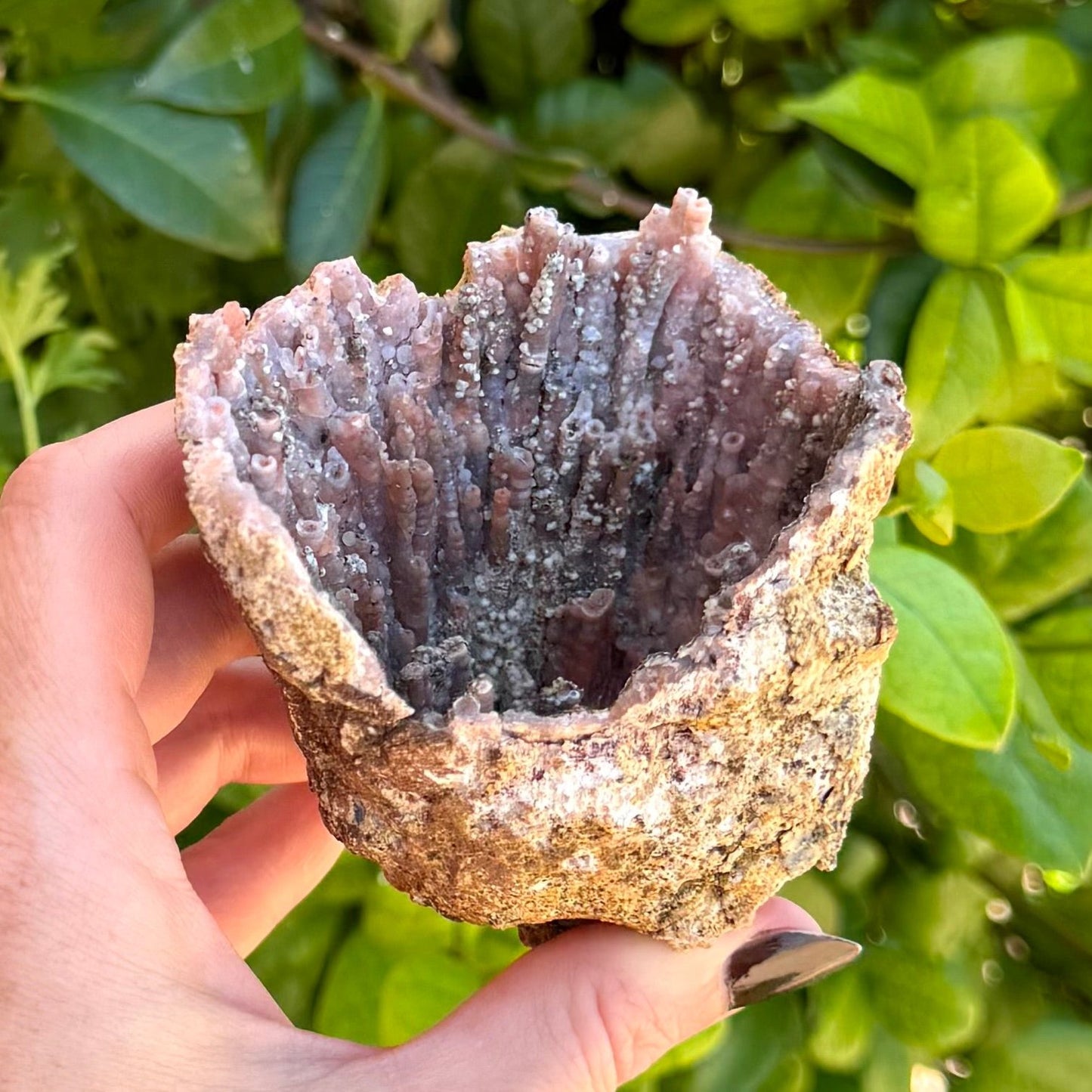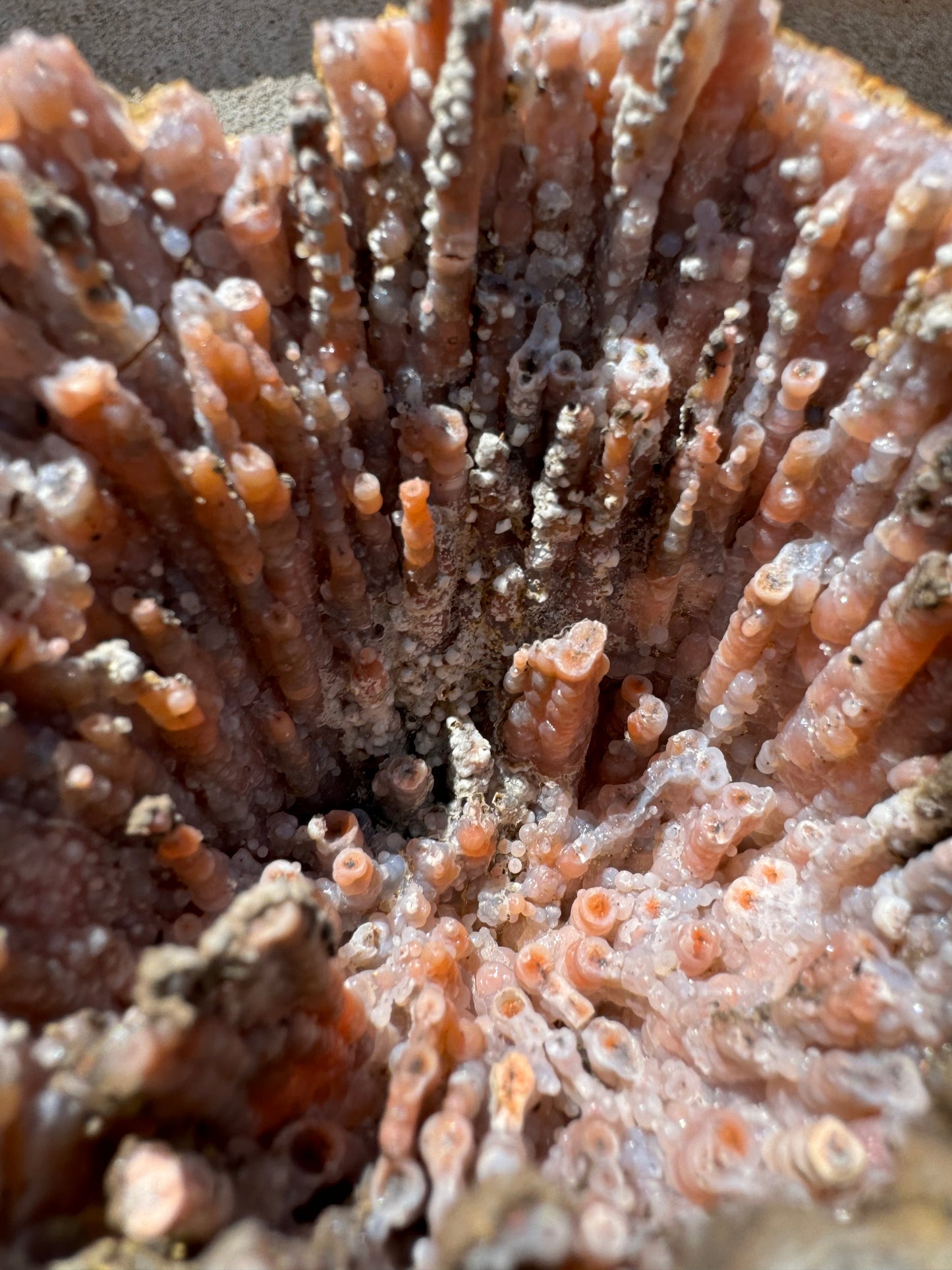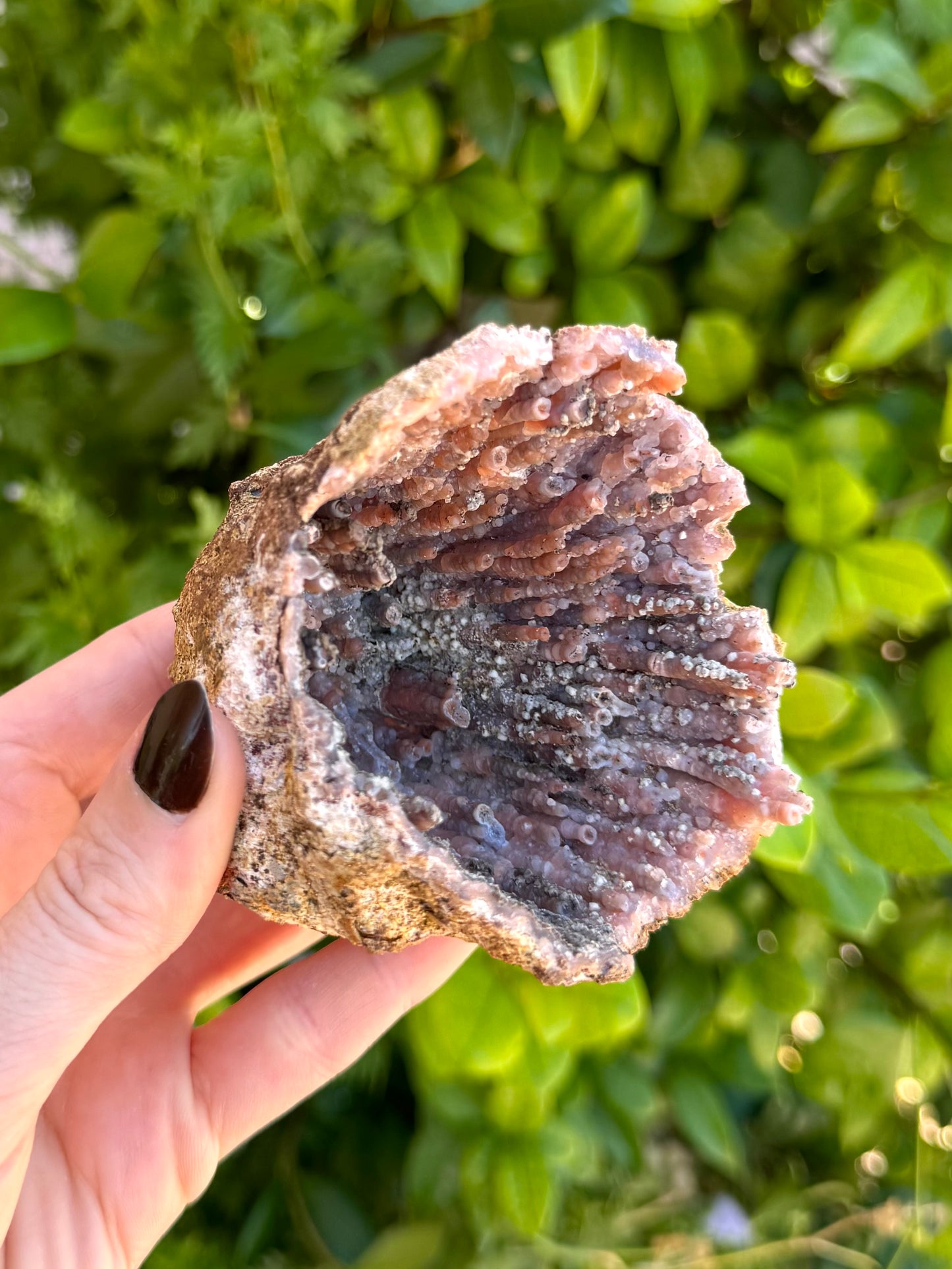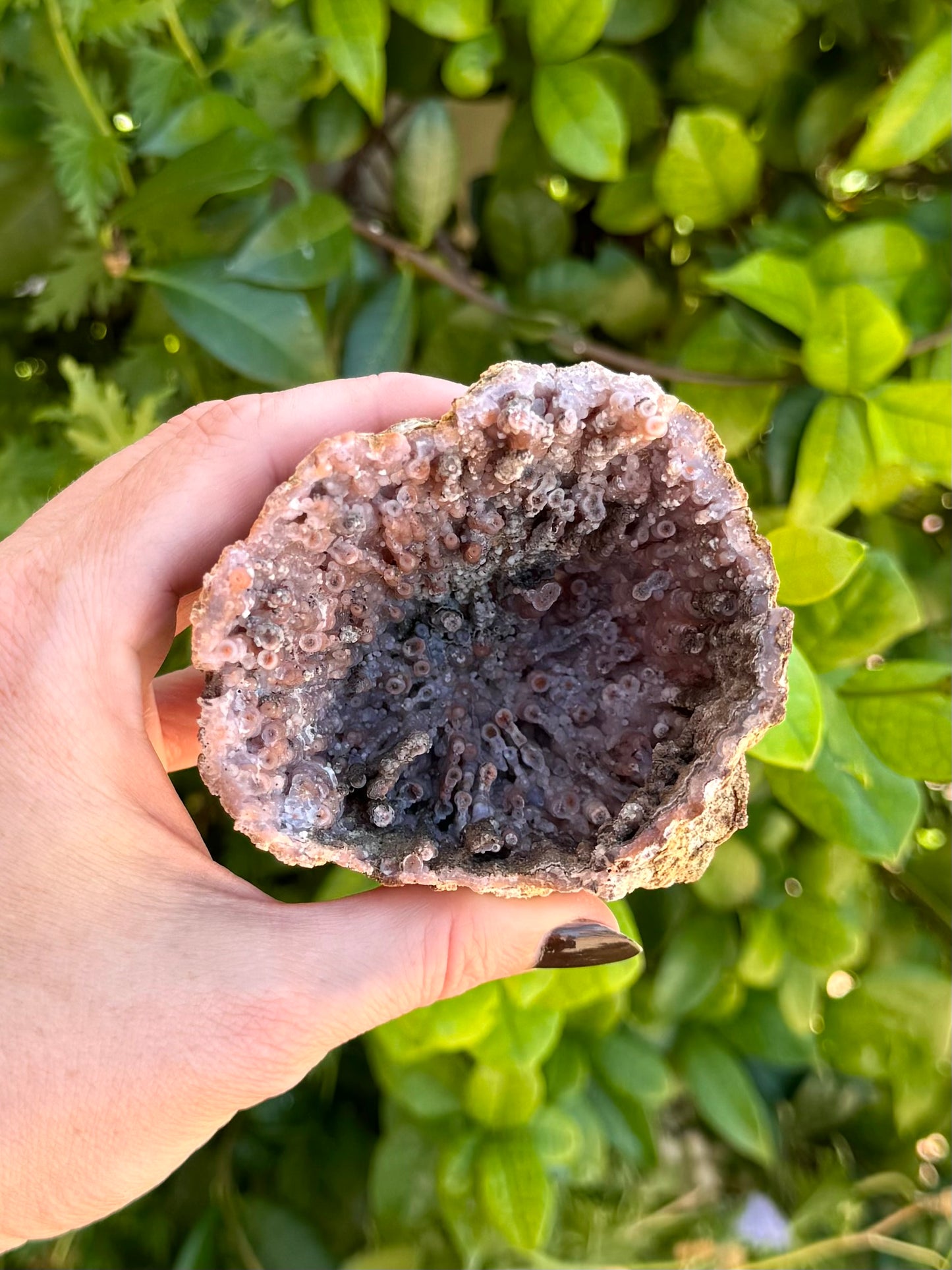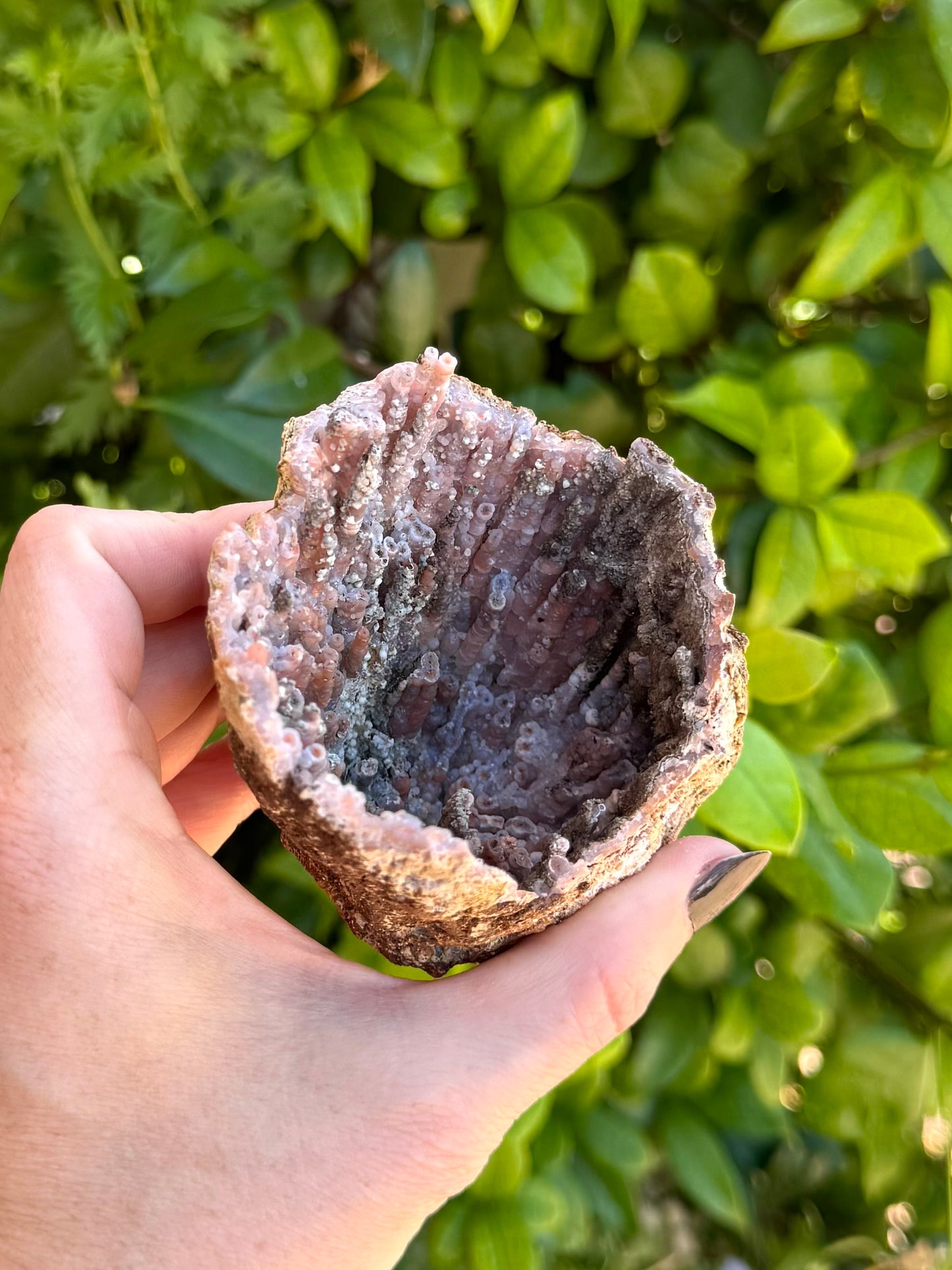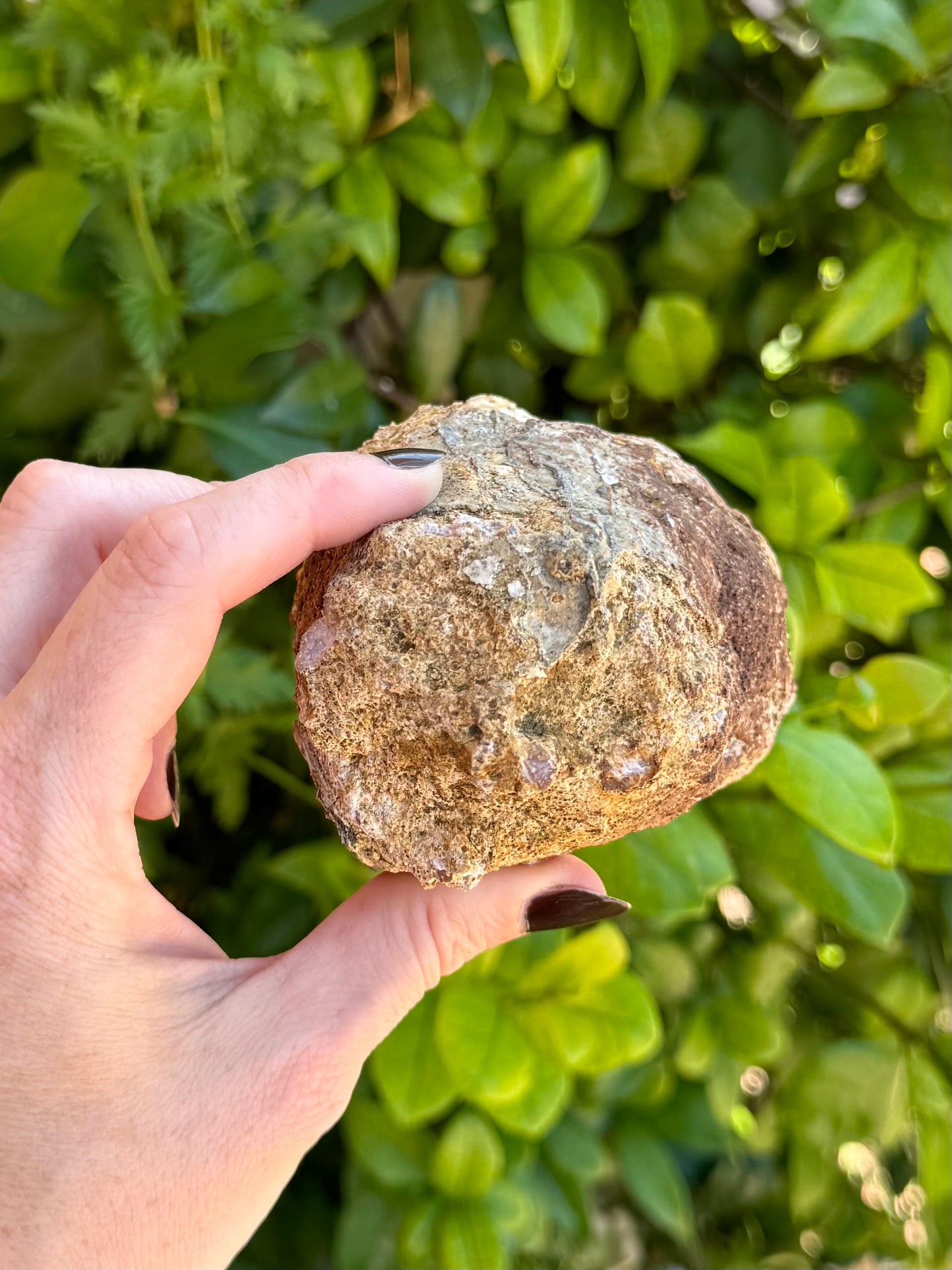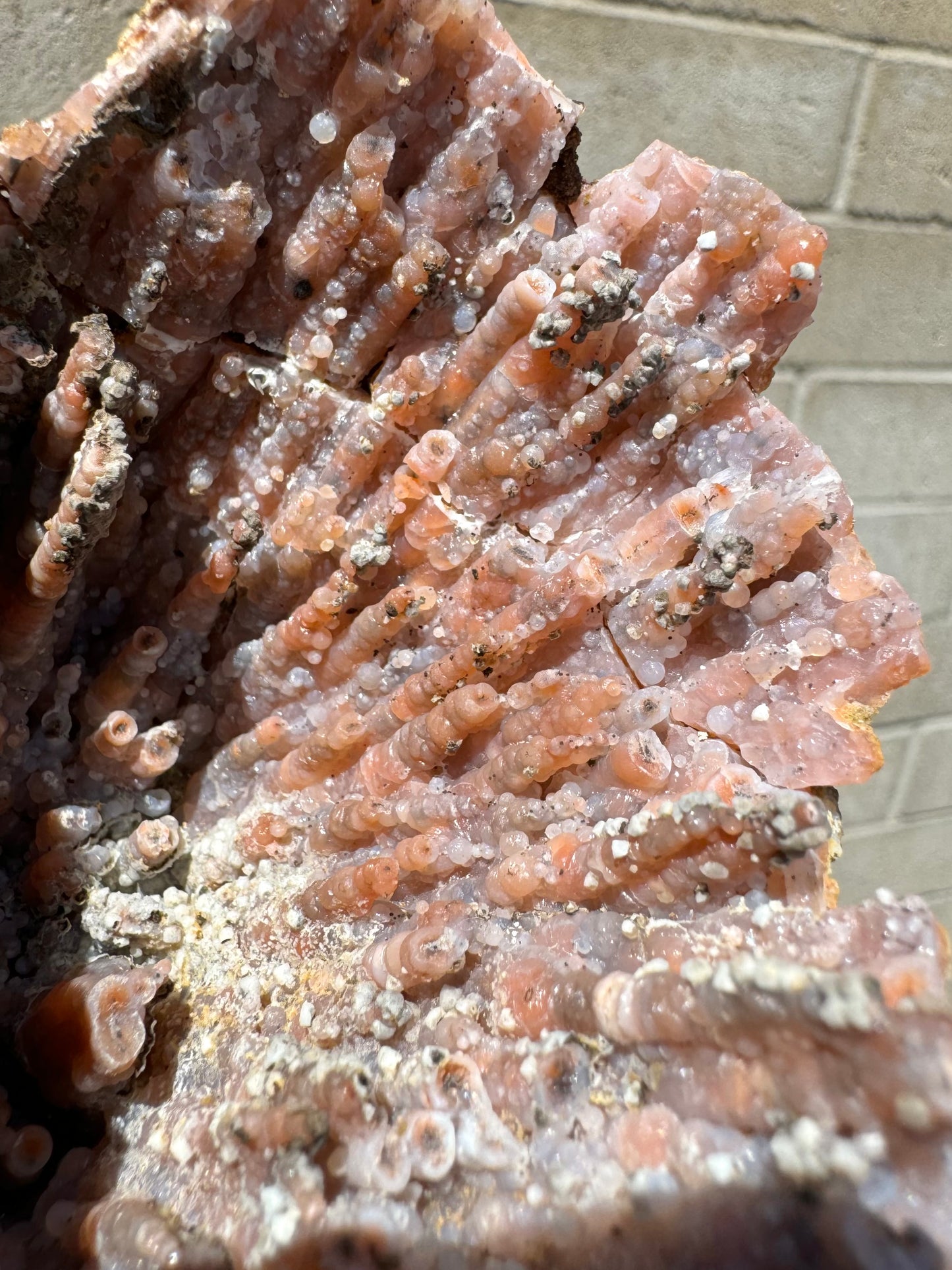Stalactitic chalcedony geode (repaired)
Stalactitic chalcedony geode (repaired)
Couldn't load pickup availability
Locale: Atlas Mountains, Morocco
Approx dimensions: 2.75 x 2.75 x 2"
Approx weight: 172g
**Repaired specimen
These unusual geodes from Morocco are like small caves lined with stalactites, botryoidal forms, and swirling agate patterns. While commonly called red chalcedony, I find the color is more orange to red-orange. Hematite causes this coloration, but later phases of growth (“second generation”) don’t contain hematite inclusions. This creates a colorless-to-white growth over the orange chalcedony, which can produce a soft orange-cream druzy coating, or bold Halloween patterns of orange and white stripey stalactites.
This specimen has oodles of stalactites covered in blobby botryoidal growth. There are a lot of broken stalactites, but this creates an interesting effect. Where stalactites have broken you can see a pinpoint of a dark, metallic, mineral at the core, surrounded by vivid orange chalcedony, then translucent white chalcedony.
There is also a dark brown mineral overgrowth (unknown; I have not been able to find info on common associates of this material) that appears to have calcite underneath; it gives a slight UV reaction. I would love to know more about how these geodes formed. I have observed many are “ice cream cone” shaped—technically speaking, “conical.”
This specimen has been inexpertly repaired from several pieces. Not all pieces were reset evenly so cracks may be offset.
UV reactivity white chalcedony gives a light white fluorescent reaction under 365 nm UV light.
** Brittle warning! This material has the tendency to be crumbly, shedding pieces when handled. Limit handling and do not place stress on repair joints.
Repaired: This specimen has been repaired, meaning it broke but someone recompiled and glued it back together. These Moroccan geodes are frequently recompiled and glued together—but this is infrequently disclosed :( Read more about how to detect repairs.
I don't know how often breaks occur due to rough techniques in mining or cracking the geodes open, but I suspect many of the breaks are natural based on how few intact pieces I have ever seen. I have observed many of these geodes have a fairly thin, brittle crust which may make them susceptible to fracturing as part of normal geological processes. I have also seen examples where it appeared iron staining had leaked through the breaks, indicating the cracks occurred well before the specimen was mined.
